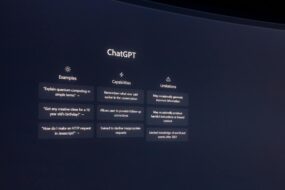
Understanding AI Detection
As you explore the question of “why do AI detectors say my writing is AI?”, it’s essential to grasp how these tools function and the techniques they employ to detect AI-generated content. Understanding this can help you navigate the complexities of AI writing, whether you are a marketer, an AI writer, or someone involved in AI detection.
How AI Detectors Work
AI detectors are designed to identify whether a text has been partially or wholly generated by artificial intelligence tools like ChatGPT. They are beneficial for educators who want to verify student work or moderators reviewing content (Scribbr). The detectors leverage advanced algorithms based on language models similar to those that power AI writing tools.
These tools analyze text for key metrics such as perplexity and burstiness. Here’s what those terms mean in a simplified format:
| Metric | Description |
|---|---|
| Perplexity | Measures the predictability of content. Lower values typically indicate AI-generated text. |
| Burstiness | Assesses the variation in sentence lengths and structures. Human writing tends to have more variability, resulting in higher burstiness. |
Detectors categorize text based on learned linguistic patterns and utilize machine learning and natural language processing techniques to assess sentence structures. As a result, they can differentiate between human-written and AI-generated content by examining these complex patterns (Surfer SEO).
Techniques for AI Detection
To determine if your writing might be flagged as AI-generated, you should be aware of the various techniques these detectors use. AI detection tools were found to be more accurate in identifying content created by GPT 3.5 than GPT 4, but inconsistencies arise when applied to human-written text, leading to false positives.
Here are some techniques used in AI detection:
| Technique | Description |
|---|---|
| Linguistic Analysis | Inspects sentence structure, word choice, and grammatical patterns to discern AI characteristics. |
| Semantic Relationships | Represents words as vectors to analyze contextual meaning and relationships. |
| Statistical Modeling | Compares text features against benchmarks established through training data to assess likelihood of AI authorship. |
Despite their utility, AI detectors are often seen as somewhat unreliable, achieving a maximum accuracy of 84% for premium tools and 68% for leading free tools. They should be viewed as indicators rather than definitive proof of AI-generated text (Scribbr). Understanding these detection principles can help you create writing that feels more authentic while navigating the AI landscape.
For further information on how to create authentic content, you might find our articles on how to avoid AI detection in writing and is grammarly ai detector accurate? helpful.
Evading AI Detection
Navigating the world of AI writing can lead to unexpected challenges, especially when detectors flag your writing as generated by AI. If you’ve wondered, “why do AI detectors say my writing is AI?” this section will help you humanize your content and provide essential tips to avoid detection.
Humanizing AI-Generated Text
To effectively evade AI detection, it’s crucial to infuse a human touch into your writing. Tools like AI Busted’s Humanizer add relatable elements to AI-generated content. This ensures the text flows naturally and mimics genuine human writing.
Here are some techniques to humanize your writing:
| Technique | Description |
|---|---|
| Incorporate Anecdotes | Share personal stories or experiences related to your topic to enhance authenticity. |
| Use Descriptive Language | Adopt a more expressive vocabulary that engages readers and reflects your unique voice. |
| Add Emotional Appeal | Evoke feelings through your writing, whether it’s humor, passion, or empathy. |
| Evoke Authenticity | Add specific details that only someone with a real-life experience could know. |
By adopting these methods, your writing will stand out as uniquely human, making it less likely to be flagged as AI-generated.
Tips to Avoid Detection
To further decrease the chances of your content being detected as AI-generated, consider the following strategies:
- Diversify Your Vocabulary: Vary your word choice and use synonyms to keep the content fresh and engaging. Avoid repetitive phrases that may raise red flags for detectors. (Narrato)
- Utilize Contractions: Incorporating contractions (like “you’re” instead of “you are”) can give your writing a more casual and conversational tone, enhancing its human-like quality.
- Match Brand Tone: Ensure that your content aligns with your brand’s tone and style. This customization not only makes the text more relatable but also authenticates your voice and approach.
- Regularly Review Content: Use tools like Surfer’s AI Humanizer to analyze and refine your text, helping it sound more natural while providing probability scores for AI detection. This allows you to make adjustments where necessary. (Surfer SEO)
- Reflect on Real-Life Experiences: Make your writing unique by incorporating personal anecdotes and specific scenarios to illustrate your points. This personal touch invites connection and sets your work apart from AI-generated content. (Quora)
By applying these techniques and tips, you can achieve a more humanlike quality in your writing, reducing the likelihood of being flagged by AI detection systems. For further guidance on this topic, explore our article on how to avoid AI detection in writing.




